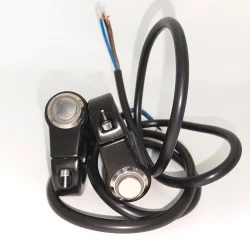Here are the primary components of a motorcycle's electrical system
2023-12-28
A motorcycle's electrical system is a crucial component that powers various electrical and electronic devices on the bike. It plays a key role in starting the engine, providing lighting, managing ignition, and supporting various accessories. Here are the primary components of a motorcycle's electrical system:
1. Battery: The battery is a vital component that stores electrical energy and supplies power to start the engine and operate electrical components when the motorcycle is not running.
2. Starter Motor: The starter motor is responsible for turning the engine over during the starting process. It is activated when the rider engages the starter button.
3. Stator and Rotor (Alternator/Generator): These components generate electrical power to recharge the battery and supply power to the motorcycle's electrical system when the engine is running. The stator is a stationary part, while the rotor rotates within it, generating alternating current (AC), which is then converted to direct current (DC) by the regulator/rectifier.
4. Regulator/Rectifier: The regulator/rectifier converts the alternating current (AC) generated by the stator into direct current (DC) and regulates the voltage to ensure a consistent and safe power supply to the battery and other electrical components.
5. Ignition System: The ignition system includes components like the ignition coil, spark plug, and sometimes an electronic ignition control unit (ICU or CDI) that work together to ignite the air-fuel mixture in the engine's combustion chamber.
6. Switches and Controls: These include various switches for functions such as lights, turn signals, horn, and engine kill switch. The handlebar controls allow the rider to manage various electrical systems easily.
7. Lights: The electrical system powers the motorcycle's lighting, including headlights, taillights, brake lights, turn signals, and indicators.
8. Wiring Harness: The wiring harness is a network of wires that connects all the electrical components of the motorcycle, ensuring proper communication and power distribution.
9. Fuse Box: The fuse box contains fuses that protect the electrical system by breaking the circuit in case of a short circuit or electrical overload.
10. Charging System Indicator: Some motorcycles have an indicator light on the instrument panel that informs the rider about the status of the charging system, alerting them to potential issues with the battery or charging components.
Regular maintenance and inspection of the motorcycle's electrical system are essential for ensuring proper functionality and preventing electrical issues. Issues such as poor connections, damaged wires, or a failing battery can affect the overall performance of the motorcycle. If you're not familiar with motorcycle electrical systems, it's advisable to seek professional assistance for troubleshooting and repairs.



